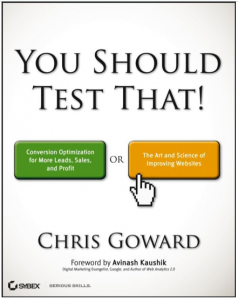A lot has been written about how to pursue Email Marketing Optimization, often with emphasis on tactics like subject line testing, email creative testing, and landing page optimization for email campaigns.
All great topics, but what I haven’t read about is an overarching framework to use while doing email optimization that will guide you through the process in a strategic way. In my day-to-day world of Conversion Optimization, there are many frameworks that one can follow. For example, the Persuasion Architecture™ developed in the early days at FutureNow, or the LIFT Model™ used by WiderFunnel up in British Columbia.
These frameworks give you guideposts to follow, things to think about, and ways to prioritize work in the field of Conversion Optimization. Maybe some experts have developed similar frameworks for Email Marketing that I don’t know about?
No matter: I’ve got one that I think will work! But I didn’t invent the framework “AIDA,” I’m just going to map it to Email Marketing optimization. Continue reading
 In honor of All Hallows’ Eve, I relay this tale of woe and warning about a Multivariate marketing experiment that was doomed, doomed from the start! Read and retain, lest ye tumble into the same pitfalls and traps in your Optimization work.
In honor of All Hallows’ Eve, I relay this tale of woe and warning about a Multivariate marketing experiment that was doomed, doomed from the start! Read and retain, lest ye tumble into the same pitfalls and traps in your Optimization work.  While case studies about conversion rate lift and increases in revenue from testing get a majority of the “press” these days, there is something far less sexy and far more important to be thinking about: The order in which you execute your test ideas.
While case studies about conversion rate lift and increases in revenue from testing get a majority of the “press” these days, there is something far less sexy and far more important to be thinking about: The order in which you execute your test ideas.

 I recently read a fascinating paper written by some folks at Microsoft called “Online controlled Experiments at Large Scale.” Skip to the end if you want a link to the paper.
I recently read a fascinating paper written by some folks at Microsoft called “Online controlled Experiments at Large Scale.” Skip to the end if you want a link to the paper. One of the reasons that Optimization is difficult is because it’s extremely cross-discipline by nature. It’s part marketing, part user experience, part design, part analytics, part web development, and part statistics.
One of the reasons that Optimization is difficult is because it’s extremely cross-discipline by nature. It’s part marketing, part user experience, part design, part analytics, part web development, and part statistics. A lunchtime topic came up today regarding Web Analysts and Conversion Optimization specialists. We started debating what each job was all about, what the similarities were, what the differences were, and whether you could be good at both.
A lunchtime topic came up today regarding Web Analysts and Conversion Optimization specialists. We started debating what each job was all about, what the similarities were, what the differences were, and whether you could be good at both.